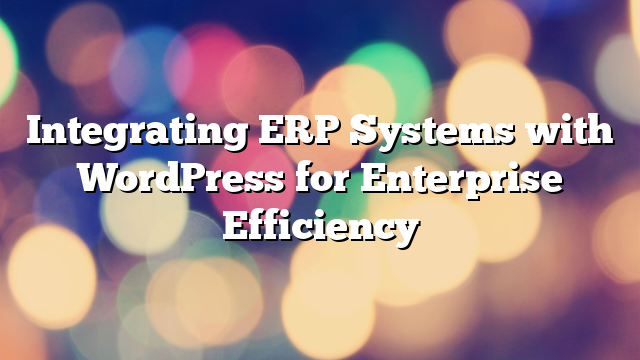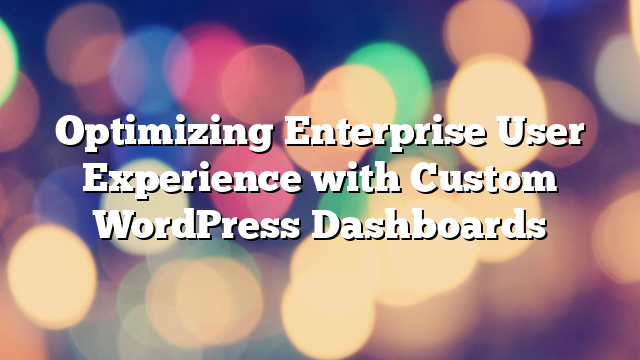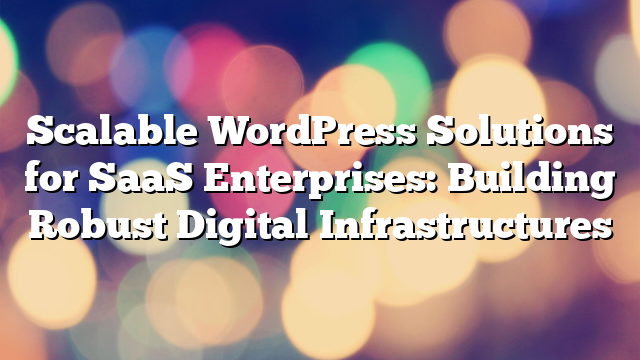Why Enterprises Should Consider Headless WordPress
20.12.2024

As enterprises scale and embrace advanced digital strategies, traditional content management systems (CMS) sometimes fall short in meeting evolving demands. This is where Headless WordPress comes in—a modern solution that separates the backend (content management) from the frontend (content presentation). By adopting Headless WordPress, enterprises can unlock unparalleled flexibility, performance, and integration capabilities. This article explores why Headless WordPress is an ideal choice for enterprise-level projects.
What is Headless WordPress?
In a traditional WordPress setup, the CMS manages both the backend and the frontend of a website. However, with Headless WordPress, the frontend is decoupled, allowing developers to use alternative technologies like React, Angular, or Vue.js to present content. The backend still uses WordPress for content management, while APIs (such as the REST API or GraphQL) deliver data to the frontend.
Benefits of Headless WordPress for Enterprises
1. Enhanced Performance
By decoupling the frontend, Headless WordPress allows enterprises to build ultra-fast websites. Modern frameworks like Next.js and Gatsby provide optimized rendering, resulting in faster load times and improved user experiences.
2. Improved Scalability
Enterprises often handle high volumes of traffic and complex data. Headless WordPress supports scaling by enabling the frontend to operate independently, allowing for tailored optimizations and load balancing.
3. Multi-Channel Content Delivery
Headless WordPress excels in delivering content to multiple platforms, including websites, mobile apps, IoT devices, and even digital signage. This makes it ideal for enterprises with omnichannel strategies.
4. Developer Flexibility
Decoupling the frontend gives developers the freedom to choose the best technologies for their projects. Frameworks like React or Angular enable enterprises to create highly customized and innovative user interfaces.
5. Enhanced Security
Separating the backend from the frontend reduces the attack surface, as the WordPress dashboard is not directly exposed to the public. Additionally, custom APIs can implement stricter security protocols to safeguard data.
6. Future-Proof Architecture
Headless WordPress allows enterprises to adapt to new technologies more easily. By separating concerns, enterprises can update the frontend or backend independently, ensuring the architecture remains modern and relevant.
Key Use Cases for Headless WordPress
1. High-Traffic Websites
For enterprises managing websites with millions of visitors, the performance boost from Headless WordPress can be invaluable. Faster loading times translate to better engagement and higher conversion rates.
2. Complex Content Needs
Enterprises with diverse content needs, such as e-commerce, news portals, or multilingual websites, benefit from the flexibility of Headless WordPress in managing and delivering content efficiently.
3. Mobile App Integration
Headless WordPress can seamlessly power mobile applications by serving content via APIs. This ensures consistent data and content across all platforms.
4. Multi-Platform Campaigns
For enterprises running multi-channel campaigns, Headless WordPress provides a unified backend for content creation, while the API delivers content to various platforms such as websites, apps, and social media channels.
Challenges of Adopting Headless WordPress
1. Increased Development Complexity
While offering flexibility, Headless WordPress requires a skilled development team to manage the decoupled frontend and backend, as well as API integrations.
2. Higher Initial Costs
The initial setup of Headless WordPress can be more expensive compared to traditional WordPress. However, the long-term benefits often outweigh the upfront investment.
3. Dependency on APIs
Headless architecture relies heavily on APIs for content delivery. Poorly optimized APIs or server issues can impact performance and reliability.
Best Practices for Implementing Headless WordPress
1. Define Clear Goals
Before transitioning to Headless WordPress, define your enterprise’s objectives. Whether it’s improved performance, multi-platform delivery, or enhanced user experiences, clear goals ensure alignment.
2. Choose the Right Frontend Technology
Select a frontend framework that aligns with your enterprise’s needs. React and Next.js are popular choices for their performance and flexibility.
3. Optimize APIs
Ensure your APIs are well-designed and optimized for speed. Use caching and Content Delivery Networks (CDNs) to minimize latency and improve performance.
4. Invest in Developer Training
Equip your development team with the knowledge and tools needed to build and maintain a Headless WordPress setup. Regular training ensures they stay updated with best practices.
5. Monitor Performance
Regularly monitor both the backend and frontend performance. Use tools like Google Lighthouse and API monitoring solutions to identify bottlenecks and opportunities for improvement.
Conclusion
Headless WordPress is a game-changer for enterprises seeking flexibility, scalability, and innovation. By decoupling the backend and frontend, it empowers businesses to deliver exceptional digital experiences while future-proofing their architecture. Though challenges exist, careful planning and execution can help enterprises reap the full benefits of this modern approach.
Ready to explore Headless WordPress for your enterprise? Contact AllWebDev today to learn how we can help you implement a cutting-edge solution!



